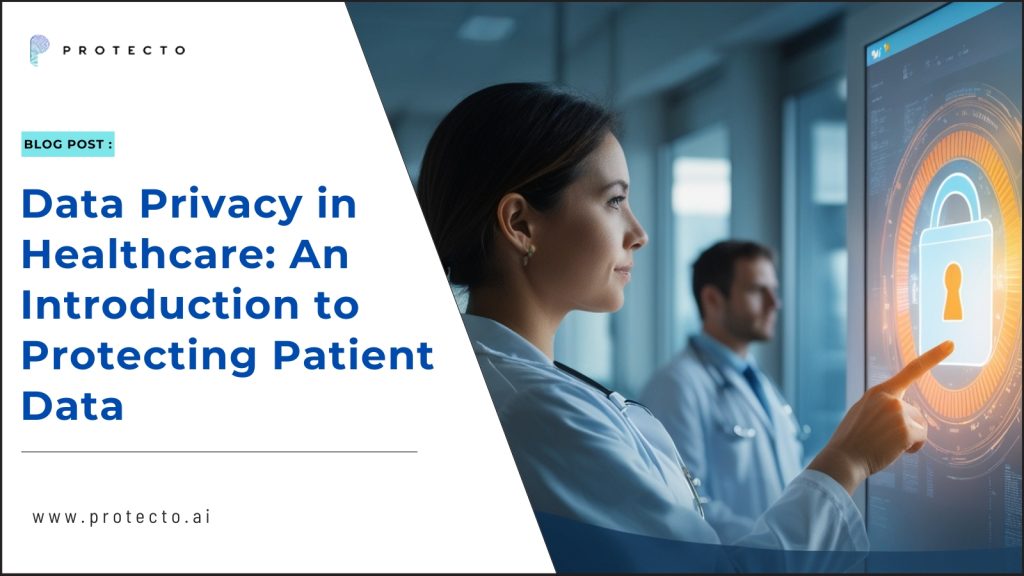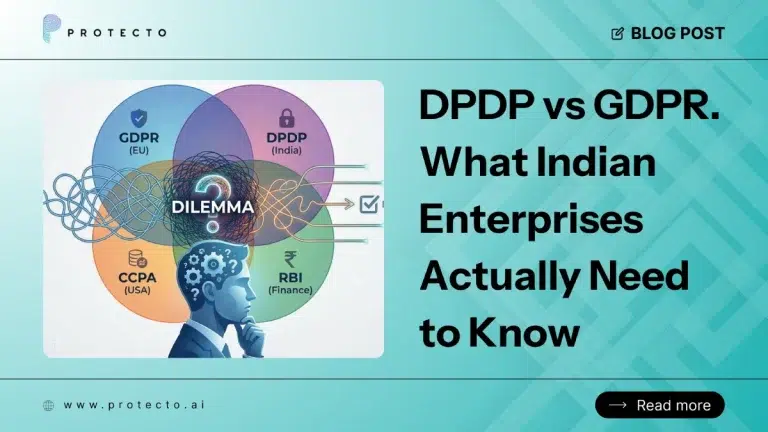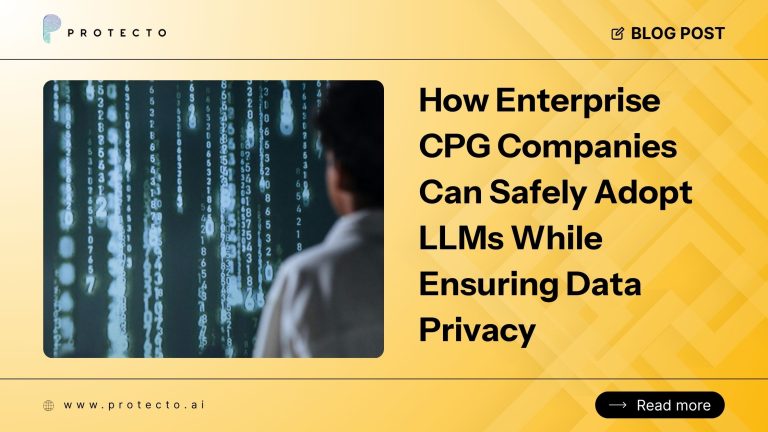Healthcare organizations routinely handle large amounts of sensitive data, making data privacy in healthcare a top priority. Protecting patient data is not just about compliance—it’s crucial for maintaining patient confidentiality and safety. Unauthorized access can be severely detrimental, leading to breaches that compromise medical records and erode trust.
Over the years, the digital revolution in healthcare has greatly elevated patient care standards. However, this progress comes with a major challenge—the constant threat of data breaches and cyberattacks. If patient information falls into the wrong hands, it can be misused for fraud, identity theft, or other malicious purposes.
Robust security protocols are no longer optional. They serve as the first line of defense against mounting cyber risks. Healthcare providers must proactively implement data privacy strategies to ensure compliance and protect their reputation.
Regulatory bodies are tightening their grip on data protection, frequently updating laws to address evolving risks. As technology advances, so do the threats. To meet modern security expectations, healthcare organizations must build Fort Knox-level security to safeguard patient data effectively.
Understanding Data Privacy in Healthcare
Healthcare facilities are basically a gold mine of patient data. Personal information, medical histories, prescriptions, you can find it all. Data privacy for patients ensures that only authorized personnel can access this data. As more and more of this data gets digitized, the need for more stringent security measures can increase.
It is crucial here to make a distinction between data security and data privacy. While they are closely related, they are not the same. Data security plays a pivotal role in establishing security practices like access control, an essential part of data privacy.
Here are a few important categories of sensitive healthcare data:
- PHI or Protected Health Information: Medical records linked to personal identifiers, including names, birth dates, addresses, etc.
- EHRs or Electronic Health Records: Standard healthcare charts created and maintained by healthcare providers are now stored in digital form.
- Billing and Insurance Data: Details of financial transactions and insurance coverage details. Being financial data, this might be of special interest to cyber criminals.
- Prescription Data: Includes information on drugs and treatments prescribed to specific patients. Those looking to steal data can get a lot of insight from this, as this can reveal a person’s health status in great detail.
Key Regulations Governing Healthcare Data Privacy
- HIPAA (USA): The mainstay of healthcare data privacy regulations, with detailed mandates and security protocols for health information. HIPAA also includes best practices regarding the storage of electronic records and puts forward recommendations for handling data breaches.
- GRPR (EU): This applies to healthcare providers handling any kind of patient data in the EU, irrespective of their actual physical location. The GDPR offers individuals a large amount of control over their own PHI.
- HITECH Act (USA): Aimed to strengthen further the protocols surrounding handling health records, the HITECH Act pushes for stronger digital security measures and enforces further penalties for non-compliance.
Key Challenges in Ensuring Patient Data Privacy
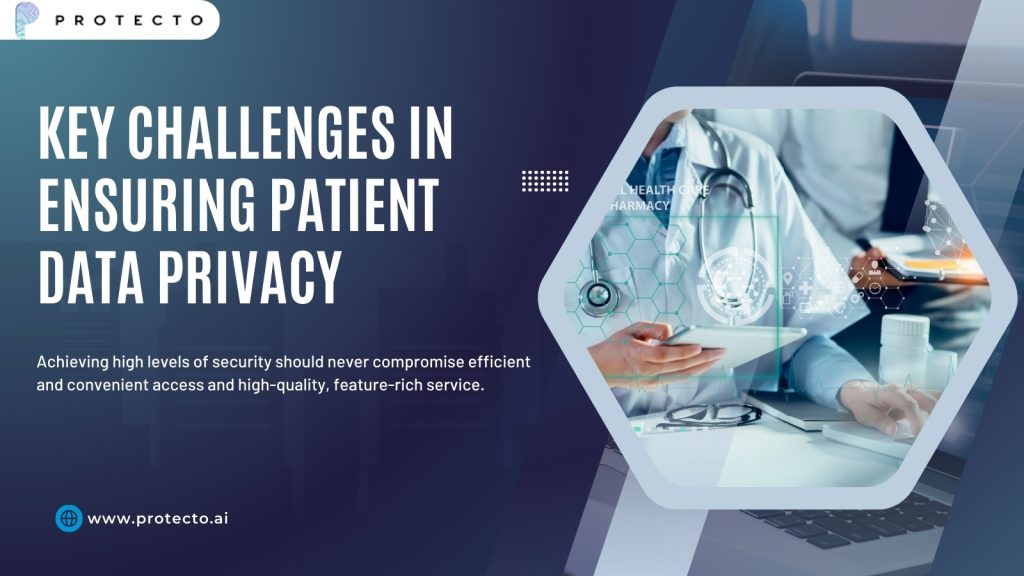
Healthcare organizations face evolving security threats as technology advances.
-
Cybersecurity Risks – Malware, ransomware, DDoS, and credential-stuffing attacks can compromise systems and patient data. Insider threats also pose risks, with staff potentially misusing records.
-
Third-Party Vulnerabilities – Vendors, cloud storage providers, medical devices, and health apps can introduce security gaps if not properly managed.
-
Regulatory Complexity – Adapting to ever-changing data privacy laws and upgrading legacy systems is a constant challenge.
-
Balancing Security & Accessibility – Strong protections must not hinder service efficiency, quality, or patient access to care.
Ensuring patient data privacy requires proactive security measures without compromising healthcare delivery.
Read More: Protecting PHI in Unstructured Medical Text
Best Practices for Data Privacy and Security in Healthcare
With all the above points in mind, healthcare providers must implement robust and capable security to minimize data privacy risks. When employed judiciously, these best practices can help raise data privacy standards in the healthcare industry.
- Secure sensitive patient records with data encryption, making them inaccessible without proper authorization.
- Implement appropriate access control and authentication mechanisms to prevent unauthorized access, preferably using methods like multi-factor authentication (MFA) to enhance security further.
- Implement consent management into your data workflow. Make sure you secure explicit consent from patients for any sharing of medical records.
- Securely dispose of outdated records to prevent exposure of old patient data.
- Use endpoint security solutions to enhance data security for points of contact, like websites, medical devices, and health apps.
- Carry out routine security audits to find vulnerabilities in your security system so they can be patched up. This can be complemented by regular security awareness training for your staff to prevent human error.
- For real-time detection of suspicious events, use modern AI-powered security solutions.
Interested Read: What is Data Protection in Healthcare, and Why is it Important?
The Role of Technology in Healthcare Data Protection
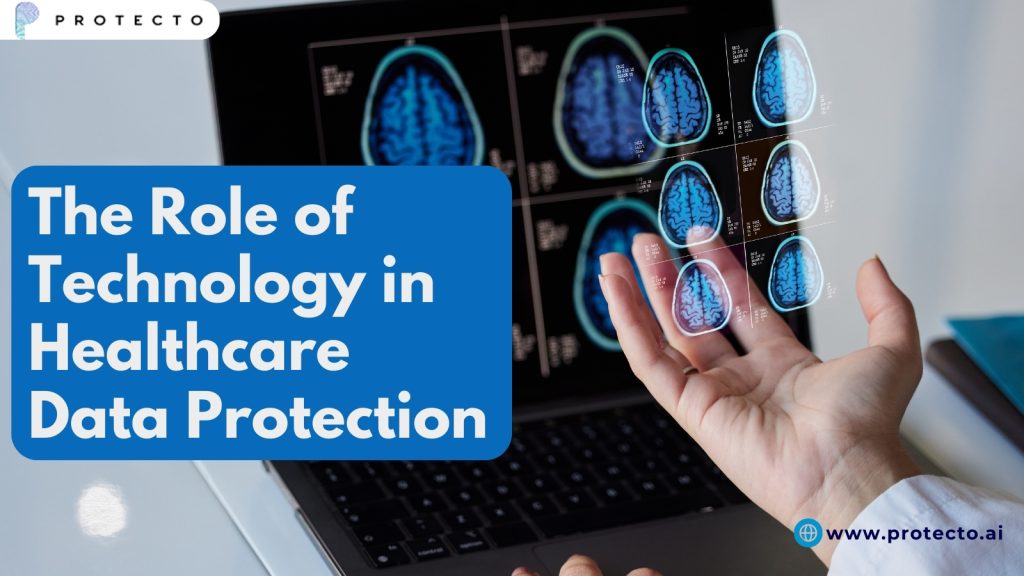
Using innovative technology for data protection in healthcare can be beneficial in more ways than one. Use the right tools for the right job, enhancing patient confidentiality while also ensuring convenient access whenever applicable.
Use different data masking and anonymization techniques to elevate the protection of personal data. This can enable efficient use of medical data for vital research and other purposes without disclosing any kind of patient data.
To monitor data access attempts and flag suspicious activity, use AI-driven anomaly detection. Similarly, implementing the proper cloud security protocols protects data in place while in the cloud and prevents data leaks.
With modern technology having evolved in leaps and bounds, you now have the option to use distributed information infrastructures like blockchain technology to store your medical records. The inherent structure of blockchains can be a deterrent to unauthorized changes to medical data and help improve data integrity.
Future Trends in Healthcare Data Privacy
As the parameters of healthcare data privacy continue to grow and evolve, Going forward, there are quite a few future trends you can expect to feature prominently in available solutions.
AI and machine learning have already become valuable resources in this matter. In the future, expect more and more healthcare providers to lean heavily on AI for real-time monitoring of sensitive data, with AI-powered system health audits helping detect potential vulnerabilities and automated alerts for data breach situations.
Another potential future trend is the increased use of decentralized storage for medical data. Distributing sensitive data across multiple locations significantly reduces the risk of large data breaches from a single location.
With new regulatory frameworks being fashioned worldwide and more stringent regulations expected in the coming years, these are welcome changes indeed.
Final Thoughts
Safeguarding patient records and sensitive health information is crucial. This is a good time to take data protection in healthcare seriously and invest in strategies and solutions that can help you long-term.
For advanced privacy solutions, consider Protecto. With a range of advanced data privacy solutions, Protecto is ready for multiple use-case scenarios, including healthcare.

